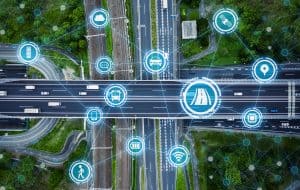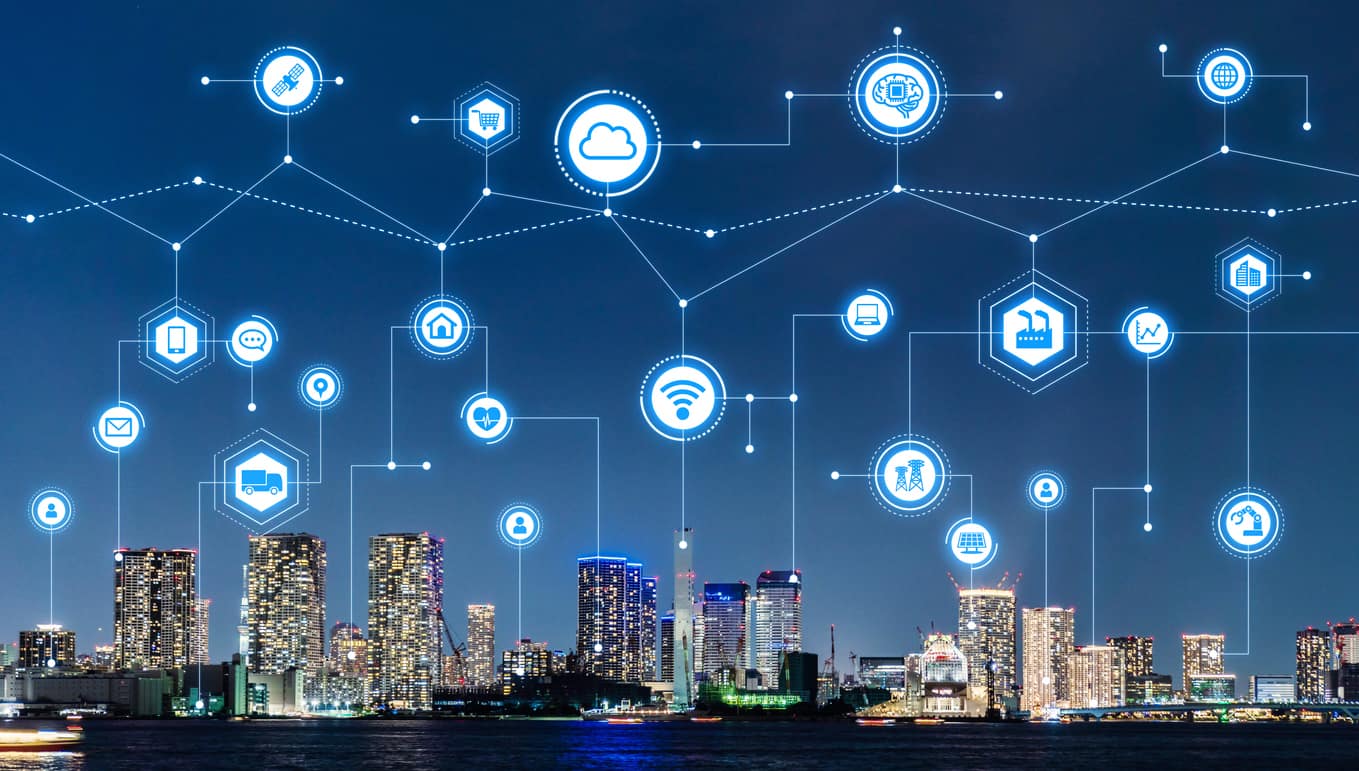Green Tech to Improve Public Health and Safety
IoT Technologies Benefit Sustainable Smart Cities
By Jane Marsh
 As the conversation around greenhouse gas emissions and climate change intensifies, cities are implementing green initiatives to make life easier and healthier for the planet and citizens.
As the conversation around greenhouse gas emissions and climate change intensifies, cities are implementing green initiatives to make life easier and healthier for the planet and citizens.
Innovative communications and Internet of Things (IoT) technologies have pioneered the shift towards "smart cities", and a supportive digital landscape that promotes sustainability, optimal well-being, and public safety.
In essence, a smart city is a metropolitan area that utilizes information technology to improve the quality of life and urban operations on a social, economic, and cultural basis.
In the workplace, these eco-friendly cities worldwide are even improving occupational welfare.
Here are 10+ ways sustainability and new IoT technology prove invaluable for worker safety, as well as for public health in general>>>
Lean Operations Decrease Risks
The idea behind lean operations is performing better work with fewer resources. IoT systems improve occupational safety and promote more promising manufacturing practices through automation. Examples of lean operations in conjunction with IoT tech are:
- Sensors that automatically turn heavy machinery off when not in use
- Advanced robotics to reduce greenhouse gas emissions
Benefits of lean operations include:
- Transfer of employees from high-risk labor jobs to safer, higher-paying positions
- Increased productivity while reducing physical harm to humans and the environment
Lean operations also encourage organizations to develop more robust long-term sustainability plans with employee safety at the forefront.
Green cities utilizing IoT systems enhance municipal workers' safety, in particular. For example, pipe crawlers are small robots with attached cameras that crawl hard-to-reach pipes to detect sedimentation, cracks and leaks, dents, and other blockages. This prevents workers from having to climb into unsafe, germ-infested areas.
Boosts Employee Retention
Since the world's reopening from the coronavirus pandemic, companies have experienced an exodus of employees known as the Great Resignation.
In January 2022, 4.3 million employees quit their jobs while organizations scrambled to fill 11.3 million openings. Finding skilled workers is a time-consuming and expensive process, making employee retention all the more critical.
According to a 2021 IBM Institute for Business Value (IBV) survey, 71% of employees and job seekers want to work for a sustainable company. Another survey found that 10% of millennials would take a $5,000 to $10,000 pay cut to work for a company with a strong sustainability plan.
Ultimately, green companies keep employees engaged and committed to their work, resulting in (and due to) healthier and safer workplaces.
Use of Public Transportation
 Many green cities have implemented IoT systems to upgrade sustainable public transportation and commuter safety, reducing the occurrence of vehicle collisions and accidents, such as:
Many green cities have implemented IoT systems to upgrade sustainable public transportation and commuter safety, reducing the occurrence of vehicle collisions and accidents, such as:
- Electric car-sharing programs that reduce vehicle congestion and use sensors to understand driver behaviors for future infrastructure planning
- Smart sensors that enable greater control over airplanes, making it easier to maintain, secure, and comply with Federal Aviation Administration (FAA) guidelines
- Cars that integrate built-in navigational systems and Bluetooth technology to connect smartphones
- Smart buses that increase safety and optimize routes, allowing passengers to track bus locations and pick-up times
Reduces Mental Fatigue
 Implementation of green infrastructure in cities helps alleviate mental fatigue. Considering sustainable cities aim to improve the quality of life for their citizens, interactions with green spaces are beneficial for employees.
Implementation of green infrastructure in cities helps alleviate mental fatigue. Considering sustainable cities aim to improve the quality of life for their citizens, interactions with green spaces are beneficial for employees.
Studies show that having ample vegetation in and around workplaces can reduce stress and boost focus and productivity.
When workers have easy access to nature throughout the day, whether spending their breaks outdoors or having a view of a park from their office window, they can experience its many therapeutic benefits.
Prevents Gas Leak Exposure
Innovative city technology is a critical component for municipal occupational safety in additional ways. Green cities may employ devices that detect methane gases, pole tilt sensors, or air quality monitors to ensure public safety.
These IoT systems allow the city to predict potential hazards and respond to disasters more effectively. When it comes to gas leaks, advanced meters can detect open fuel lines or unusual flow conditions, setting off an alarm.
Considering utility workers are typically the first responders to a gas leak, IoT technology can shut off gas remotely before worker exposure at the site.
Access to Healthier Food
Green cities that implement urban agriculture enhance worker and public safety by providing access to healthy, affordable food.
Emerging agricultural technologies include vertical farming, IoT sensors in open fields, and smart greenhouses. Farmers that use IoT systems can remotely monitor moisture and temperature levels, security, and irrigation.
Likewise, smart greenhouse technologies can reduce electrical costs by 33% while predicting natural sunlight for optimal plant growth. These innovative greenhouse IoT systems may also include automated climate control that enables greenhouses to enhance crop reduction regardless of outdoor weather conditions.
Through IoT tech combined with cutting-edge food technology, there is a year-round organic food source in metropolitan areas for improved public health.
Cybersecurity Enhances Workplace Security
Industries like information technology and web development can benefit from innovative office solutions the most, such as utilizing personal devices and cloud computing. However, with the rise of wireless technology comes the need for enhanced security.
Green cities employ IoT systems to protect the cybersecurity of their networks, and many municipal departments and other companies are doing the same. Without it, corporations risk distributing and losing sensitive data.
According to the Society for Human Resource Management (SHRM), 46% of companies use a biometric authentication system to protect data collected on devices. Some forms of biometric authentication include face recognition, fingerprint recognition, iris scanning, and voice recognition.
Reduced Energy Consumption
IoT technology can reduce energy emissions throughout offices and green cities. Smart thermostats and lighting, for example, boost building sustainability.
Commercial spaces that operate smart technologies can monitor energy inputs and outputs while improving efficiency, essentially cutting costs.
Concerning improving air quality indoors, implementing IoT automation in offices helps monitor workplace air conditioning, machinery, water heating, and refrigeration—all ways green cities can further protect worker safety.
According to the International Energy Agency (IEA), greater energy efficiency can improve physical health, including rheumatism, respiratory and heart diseases, arthritis, and allergies.
Improves Indoor Air Quality
 Scientific evidence has indicated that indoor air quality has been more polluted than outdoor air. Since most people spend 90% of their time inside, it's not unlikely they're at a greater risk for illness and respiratory issues.
Scientific evidence has indicated that indoor air quality has been more polluted than outdoor air. Since most people spend 90% of their time inside, it's not unlikely they're at a greater risk for illness and respiratory issues.
Poor indoor air quality often leads to sick building syndrome (SBS)—cold symptoms, allergies, and other chronic conditions that derive from toxic building materials, volatile organic compounds (VOCs), asbestos, and other chemical and material treatments.
However, smart cities are using special IoT software to combat SBS. Currently, tech companies are developing a sensory system that can be integrated into existing buildings to monitor and improve air quality indoors in real-time.
Reduces Workplace Accidents
IoT technologies also aim to reduce workplace accidents. For example, improving air quality should eventually reduce absenteeism at work, leading to fewer injuries. Even current research shows that healthier workers are less likely to have accidents on the job.
Actual examples of IoT software that are currently improving worker safety include:
- Smartwatches that measure exertion levels and alert employees and supervisors of dangerous levels
- Construction hard hats that reduce the risk of brain injury by redirecting rotational head motions
- The implementation of IoT systems in plant equipment, such as forklifts that can isolate risky work areas during high traffic
Workplace Safety Benefits Everyone
Green cities that focus on occupational safety benefits everyone, from employees to upper management. Workplace injuries and disease are costly, but the utilization of advanced technologies is improving health and safety in more ways than previously anticipated.
Author bio:
Jane works as an environmental and energy writer. She is also the founder and editor-in-chief of
